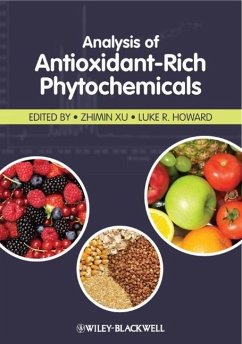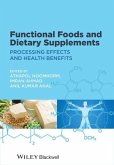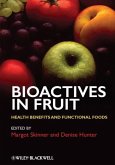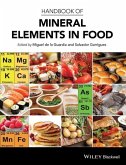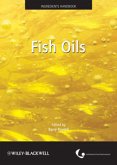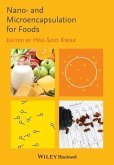To quantify antioxidants in natural sources, the application of chromatography techniques with different detectors followed by skillful sample preparation is necessary. Analysis of Antioxidant-Rich Phytochemicals is the first book that specifically covers and summarizes the details of sample preparation procedures and methods developed to identify and quantify various types of natural antioxidants in foods. Focusing on the principle of quantification methods for natural antioxidants, the book reviews and summarizes current methods used in the determination of antioxidant-rich phytochemicals in different sources. Chapter by chapter, the distinguished team of authors describes the various methods used for analysis of the different antioxidant-rich phytochemicals - phenolic acids; carotenoids; anthocyanins; ellagitannins, flavonols and flavones; catechins and procyanidins; flavanones; stilbenes; phytosterols; and tocopherols and tocotrienols. Going beyond extensive reviews of the scientific literature, the expert contributors call on their accumulated experience in sample extraction and analysis to outline procedures, identify potential problems in dealing with different samples, and offer trouble-shooting tips for the analysis. Analysis of Antioxidant-Rich Phytochemicals covers the important food applications and health-promoting functions of the major antioxidant phytochemicals, presents general analysis principles and procedures, and systematically reviews and summarizes the various analytical methods necessary for each type of natural antioxidant in different food sources. Antioxidant-rich phytochemicals in plants and agricultural food products have become an attractive subject for food, biomedical and nutrition scientists, as well as for food producers. Unlike synthetic food antioxidants, antioxidants from natural sources are generally recognized as safe for food applications and most have been confirmed as having health-promoting functions in relation to various human epidemiological diseases such as cardiovascular diseases, cancers, obesity and diabetes. In addition to their antioxidant function, many phytochemicals have been found to alter cell signaling pathways and gene expression, and thus have the ability to regulate numerous physiological functions involved in the pathogenesis of various chronic diseases.
Natural antioxidant phytochemicals usually exist at a very low level, and differ from proteins, carbohydrates, and lipids, which are macro-nutrients and abundant in food products. They are microconstituents in plants and agricultural and food products. Furthermore, the type and quantity of antioxidant phytochemicals vary significantly from source to source. Different types of antioxidants may have different antioxidant activity and bioavailablity. Although most antioxidants have UV absorption, using the traditional spectrophotometric method to quantify the antioxidants is not practical because they could be significantly masked or interfered with by many other compounds in the sources. Thus, the analysis methods for antioxidant phytochemicals are more complicated and sophisticated than those employed for macro-nutrient compounds.
This is the first book to focus on the sample preparation procedures and methods developed for identifying and quantifying natural antioxidants in plants and food products. The principle of quantification methods for natural antioxidant-rich phytochemicals is introduced, and current methods used in the determination of antioxidants in different sources are reviewed and summarized by experts in the field. As a handbook of analysis of natural antioxidant-rich phytochemicals, the volume provides practical information enabling researchers to identify the appropriate analysis methods for specific antioxidants. This book may also serve as a lecture resource for courses relating to food analysis, functional foods and nutrition.
Natural antioxidant phytochemicals usually exist at a very low level, and differ from proteins, carbohydrates, and lipids, which are macro-nutrients and abundant in food products. They are microconstituents in plants and agricultural and food products. Furthermore, the type and quantity of antioxidant phytochemicals vary significantly from source to source. Different types of antioxidants may have different antioxidant activity and bioavailablity. Although most antioxidants have UV absorption, using the traditional spectrophotometric method to quantify the antioxidants is not practical because they could be significantly masked or interfered with by many other compounds in the sources. Thus, the analysis methods for antioxidant phytochemicals are more complicated and sophisticated than those employed for macro-nutrient compounds.
This is the first book to focus on the sample preparation procedures and methods developed for identifying and quantifying natural antioxidants in plants and food products. The principle of quantification methods for natural antioxidant-rich phytochemicals is introduced, and current methods used in the determination of antioxidants in different sources are reviewed and summarized by experts in the field. As a handbook of analysis of natural antioxidant-rich phytochemicals, the volume provides practical information enabling researchers to identify the appropriate analysis methods for specific antioxidants. This book may also serve as a lecture resource for courses relating to food analysis, functional foods and nutrition.

